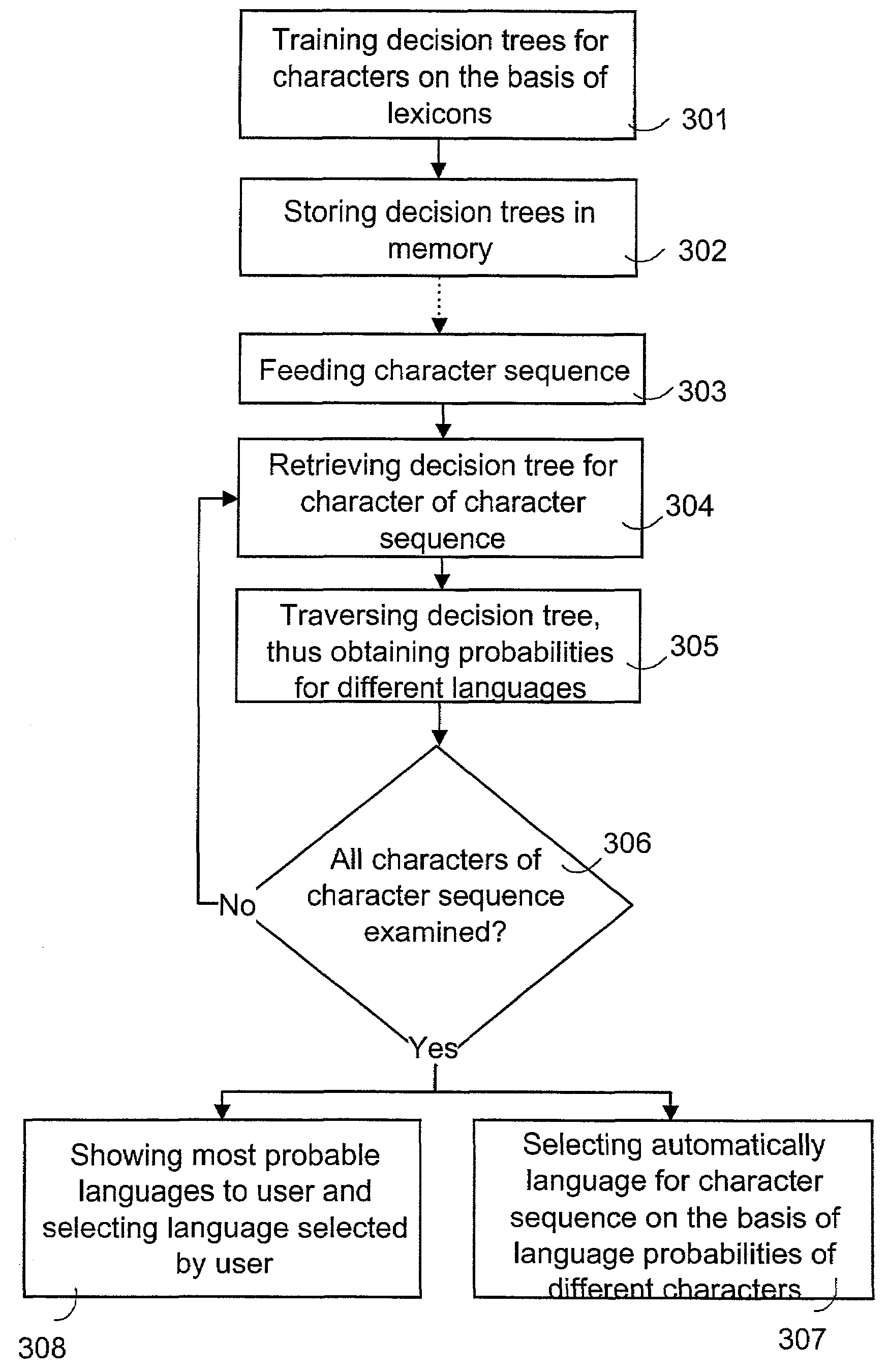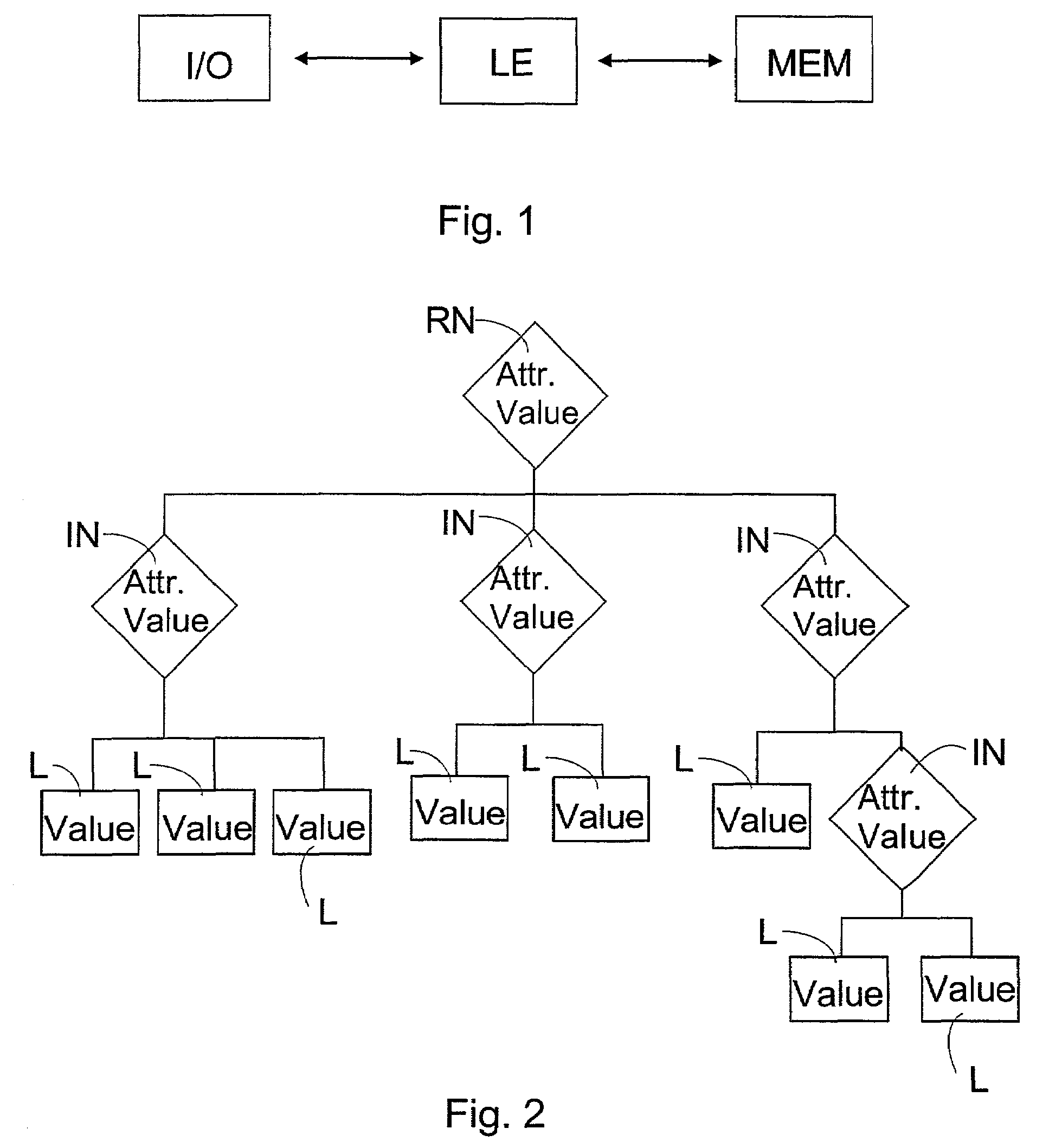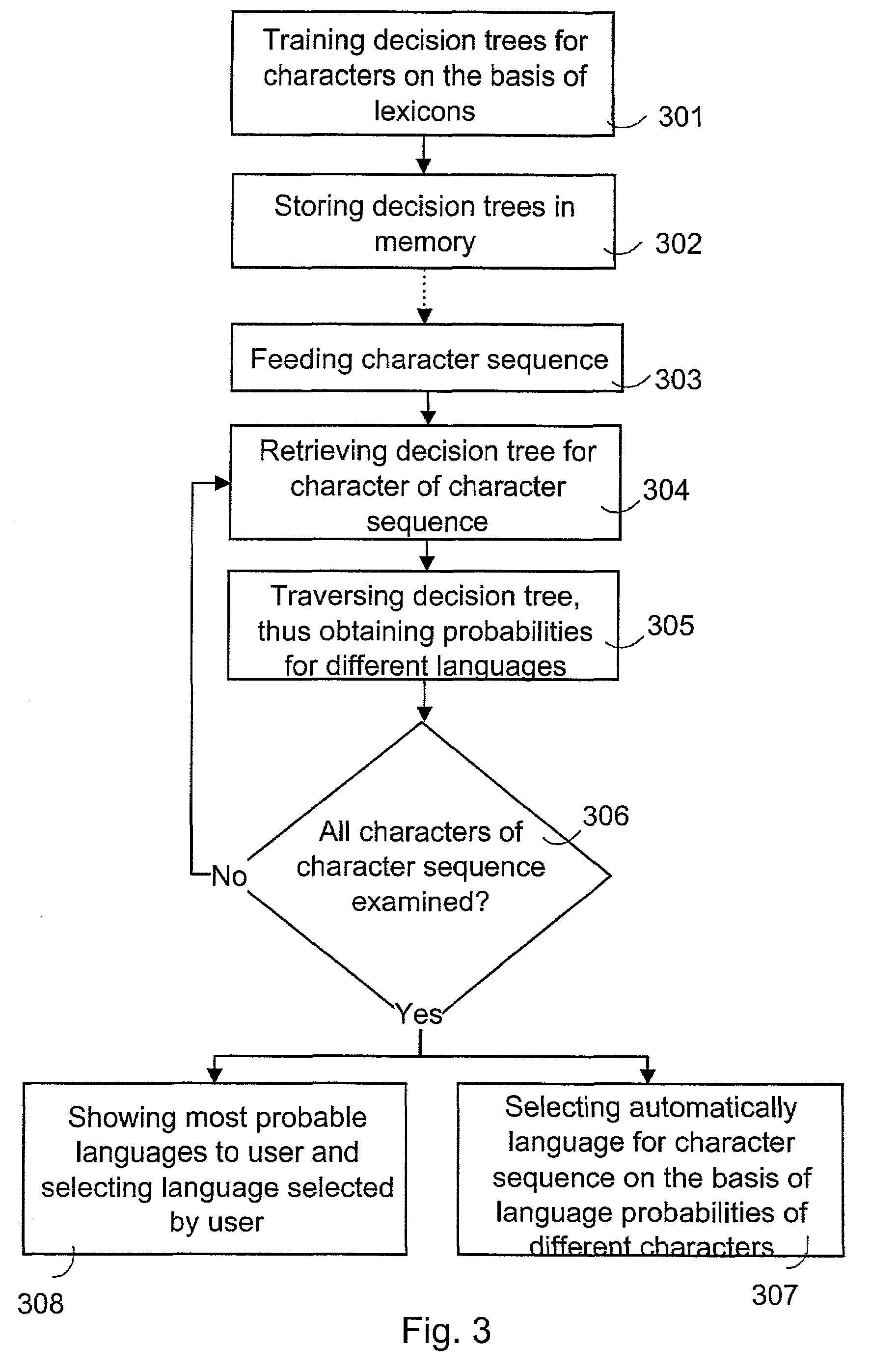Determining language for character sequence
a character sequence and language technology, applied in the field of character sequence language determination, can solve the problems of inability to determine the language used by the user in connection with each name, inability to solve the problem of poor solution, and inability to identify the user's name accurately, etc., to achieve convenient use, improve the efficiency of language identification, and compact presentation format
- Summary
- Abstract
- Description
- Claims
- Application Information
AI Technical Summary
Benefits of technology
Problems solved by technology
Method used
Image
Examples
Embodiment Construction
[0022]The invention can be applied to any data processing device that can be arranged to determine a language for a character sequence fed into the device.
[0023]FIG. 1 illustrates a data processing device TE only for the parts relevant to the invention. The TE comprises I / O means I / O, a language selector block LE and memory MEM. The memory MEM comprises a read only memory ROM portion and a rewritable portion, such as a random access memory RAM and FLASH memory. Information is transmitted through the I / O means to / from the language selector block LE, which is typically a functionality implemented by software run on a processor. The I / O means may comprise a user interface, such as a microphone or a keypad, to enable a character sequence to be fed. It is also feasible that the I / O means I / O serve as a communication interface to another application or device which is able to feed the character sequence to the language selector block LE for language determination. In the data processing d...
PUM
 Login to View More
Login to View More Abstract
Description
Claims
Application Information
 Login to View More
Login to View More - R&D
- Intellectual Property
- Life Sciences
- Materials
- Tech Scout
- Unparalleled Data Quality
- Higher Quality Content
- 60% Fewer Hallucinations
Browse by: Latest US Patents, China's latest patents, Technical Efficacy Thesaurus, Application Domain, Technology Topic, Popular Technical Reports.
© 2025 PatSnap. All rights reserved.Legal|Privacy policy|Modern Slavery Act Transparency Statement|Sitemap|About US| Contact US: help@patsnap.com



